About the Trip: Lao Airlines just opened a new route from Savannakhet, Laos to Da Nang, Vietnam. For the inaugural flight, a delegation of diplomats, tour agents and the press from each country was flown to the other to meet with their counterparts. All expenses were covered, including airfare, hotel, meals plus drinks, and admission to tourist sites. Each member of the delegation was given the choice to take either a siteseeing tour or a golf tour. Since Savan Vegas was hosting the Vietnamese visitors, a representative from their hotel was invited to be part of the delegation, but the employee that was originally slated to go had to cancel at the last minute, so Peep took his place. Also making the trip was a group of tourists that purchased a separate travel package.
We found out we were going on Monday and the plane left on Thursday. It was a mad scramble to secure a travel visa for me in just a couple of days, as Vietnam does not issue visa on arrival. Peep didn't need a visa since both countries are members of ASEAN.
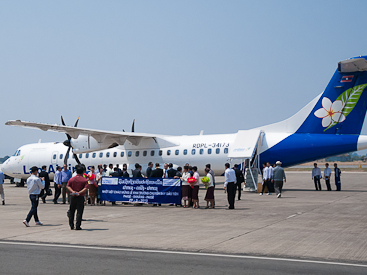
Transit to Da Nang: Before boarding the plane in Savnnakhet, pictures were taken of some of our delegation on the tarmac alongside a banner commemorating the event, with the airplane in the background. We then flew to Pakse, a city in southern Laos, where more commemoration photos were taken before we departed for Da Nang, two hours behind schedule. The flight was only an hour and we were back on the ground, through customs, and making our way by tour bus to the Blue Whale Restaurant for lunch before long. After eating, we checked in at the five-star Lifestyle Resort, where we stayed the remainder of the trip. The golfers left to play nine holes while us sightseers boarded the bus for the short trip to the city of Hoi An.
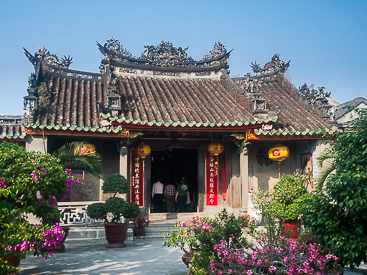
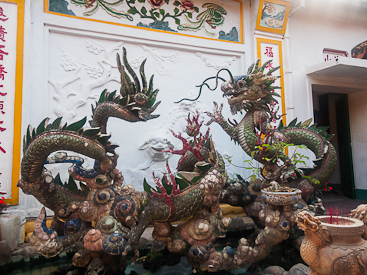
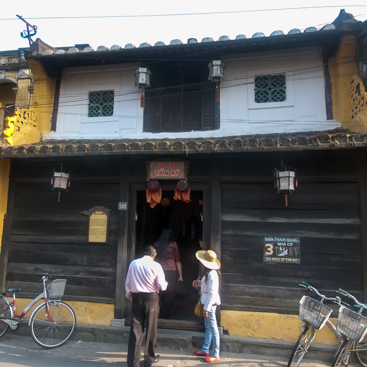
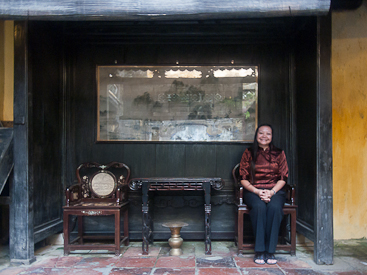
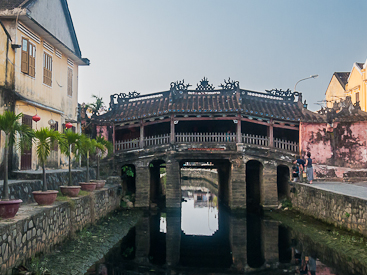
Hoi An: We were much more familiar with the town after our trip there in 2007 and were eager to see some of the historic buildings we missed five years ago. Located on the east coast of Vietnam, Hoi An has been an important port trading city throughout the centuries, and many Chinese, Japanese, Dutch and Indians have settled there. We stayed with the group to gain access to the sites on our group ticket.
Phuc Kien Assembly Hall: Our first stop was at the Phuc Kien Assembly Hall, also known as the Fujian Assembly Hall. Originally a thatch pagoda built in 1692 by the Vietnamese living in the area, the structure fell into disrepair and was sold to the rich Phuc Kien traders from China in 1759. It was restored and expanded to include a temple honoring the goddess of the sea, Thien Hau. The temple also served as a gathering place for ethnic Chinese from Fujian.
Tan Ky House: Our second stop was at an old merchant's residence known as Tan Ky House. The name, meaning "Progress Shop", was given to it by the second generation of owners. Built in the 18th century, it is the best-preserved example of a traditional merchant's house in Hoi An. The architecture is a fusion of traditional Vietnamese, Chinese and Japanese styles. Located in the center of the two-story house is an open courtyard with a water feature, allowing sunlight to pour in and naturally light up the interior. The frequency of the floods hitting Hoi An can be witnessed by marks on the wall of the back room depicting both the year and height of the flood waters.
Japanese Bridge: Our last group stop was at the Japanese Bridge, even though we didn't need a ticket to cross it. The bridge was constructed in 1593 by the Japanese trading community to connect them with the Chinese on the other side of a small stream bisecting the city. It is unique in that it has a Buddhist temple attached to one side of it. The bridge still stands as a reminder of the early influence of the Japanese in Vietnam.
We were then given some time to wander about town on our own, allowing those in our group interested in visiting the many small shops to do so. Peep and I continued to meander up and down the streets admiring the architecture of the buildings before meeting back up with the group at our bus.
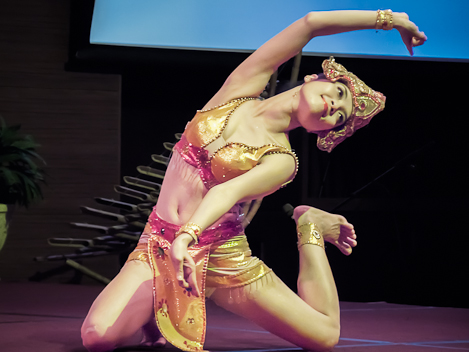
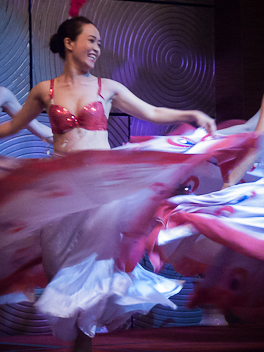
Welcome Dinner: After a quick stop back at our hotel, we rushed over to the Crowne Plaza Hotel for the welcome dinner hosted by the Da Nang government. Even though we arrived after the scheduled start time, we were, not surprisingly, still there long before the government officials from either Vietnam or Laos. Once everyone arrived, we all sat down to listen to a welcome speech, given in Vietnamese and translated into Thai. A performance featuring live music, dancing, and modeling was given as dinner was being served. Peep got the opportunity to do some networking during the course of the two and a half hour dinner, fulfilling her work obligations for the day.

